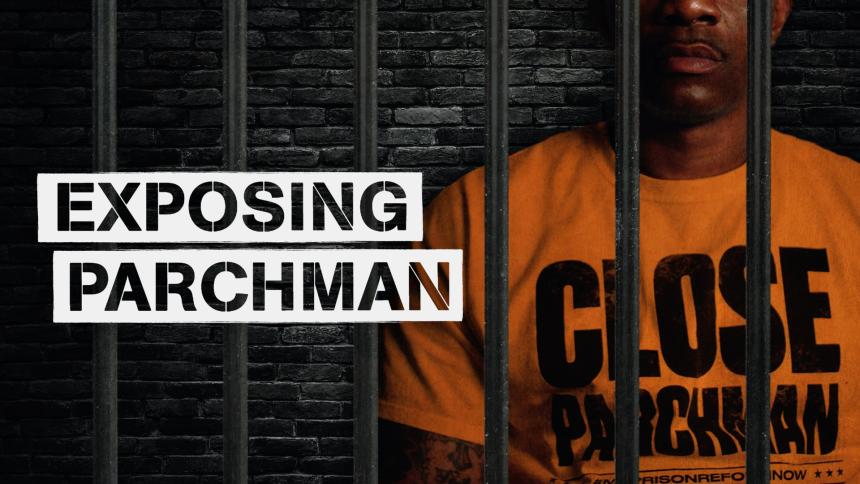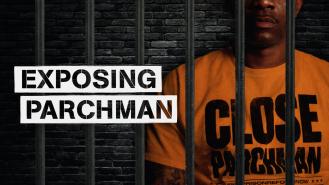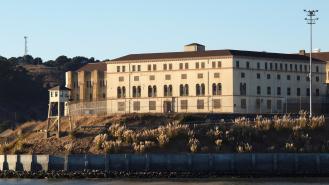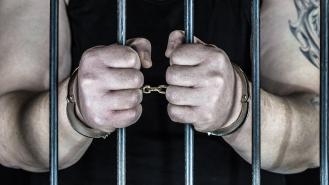
Exposing Parchman: New documentary reveals a prison 'built for torture'
Crime+Investigation's new show Exposing Parchman was featured in July's issue of Crime Monthly, the magazine for the true-crime obsessed. Click here to learn more and subscribe.
A new Crime+Investigation documentary is exposing the conditions inside a prison ‘built for torture’.
In December 2019, inmates housed in Unit 29 of the max security Mississippi State Penitentiary, also known as Parchman, began posting videos to social media. The footage was filmed on contraband phones, so each man who put one up was risking adding another 12 years to his sentence. But they were so desperate, it was a risk they were willing to take. They were in the midst of a riot and the images coming out of the cellblock were a vision of hell.
As fires raged from mattresses that had been set on fire, smoke filled the pitch-black corridors, illuminated only by the phone cameras. The floors were flooded with sewage water, and electrical wires could be seen hanging from the ceilings. And then there were the shouts of the men, screaming that people were getting stabbed, and others were dying from a lack of medications; that they hadn’t eaten or washed in days; that they were alone, with no guards or staff present. They needed someone – anyone – to help them.
The riot raged for weeks. In January alone, four men died in eight days. But this wasn’t new at Parchman, one of the US’ most notorious prisons since it was built in 1901. For decades, the people sent there had been neglected, abused, and killed, and now, with staffing at an all-time low, it was, in effect, being run by gangs. But those videos caught the attention of entertainment company and philanthropic organisation Roc Nation, and as documentary Exposing Parchman, streaming now on Crime+Investigation, reveals, they were about to make sure things changed there once and for all.
Bad beginnings
Mississippi is a state with a long and troubled history of racism and segregation. As the documentary explains, after the Emancipation Proclamation in 1863, the state stood to lose some 70 per cent of its wealth because that money was tied up in the value of enslaved people. Simply put, if the plantation owners lost their slaves, they lost money. So, in 1901, Parchman Farm was created as a prison, but the only men sent there were former slaves. Essentially, it was a 4,000-acre penitentiary plantation, housing some 3,000 black men, who were made to work the land. Some of the prisoners were made 'trusty shooters', whose job it was to stand in a gun line and shoot anyone who tried to run. In its first year, Parchman earned the state of Mississippi $185,000.
And things never changed. In the 1970s, civil rights lawyer Roy Haber began looking into conditions at Parchman. Speaking to the inmates, he found rapes, beatings and murders were common. One inmate said prisoners were being made to work outdoors from six am to six pm, with guns trained on them. When he asked why they were being treated so poorly, he was told that they were 'livestock'. Four inmates filed a class-action lawsuit against the prison, and US District Judge William Keady upheld their complaint, declaring that Parchman was unconstitutional, and conditions were, 'philosophically, morally, racially, physically and psychologically intolerable'. Keady insisted on a raft of improvements, and forced Parchman – as well as other prisons in the South – to abolish the trusty shooter system. It was also later decided it should no longer operate as a profit-making farm.
Attempts were made to improve conditions, with the state spending millions to upgrade the prison, and in 2003, the American Correctional Association said it “met all modern standards for prison operation”. In 2011, Parchman appeared to be operating well, but with budget cuts in 2014 came crippling losses to staffing levels. It was reported that year that the Mississippi Department of Corrections had lost half its workforce, with Parchman unable to fill open positions. In fact, Parchman still has fewer than half the staff they need, and some guards were even found to be trafficking contraband into the prison.
With so few guards, gangs filled the vacuum, and violence and criminal activities were soon rife within Parchman’s walls. One of the worst blocks was Unit 29, which housed the most violent offenders in the most dire conditions – and it was here that the riots would play out in December 2019, and once again turn the spotlight on the intolerable conditions.
Fighting back
Desiree Perez, the CEO of Roc Nation, had seen footage of the riots on social media, as had artists and founders Jay Z and Yo Gotti. They also began hearing that families were desperately trying to get in touch with their loved ones inside, but couldn’t reach them. In January 2020, Roc Nation wrote to the governor expressing their concern about the conditions at Parchman. When they realised that the only way to gain access to inmates and see the true scale of the problem would be to sue Parchman, they decided to back a lawsuit that was being brought by 29 inmates. But they weren’t after money, they were after change.
What they saw when they finally gained access to the prison was almost beyond comprehension. Even though attempts had been made to clean up, it was still deplorable. They found brown, foul-smelling drinking water, as well as rats, mould, and filth. Some cells were flooded with sewage water, and the holes in the ceiling meant 'it rained inside when it rained outside'. During the riot, the power had been out for days, there was no running water, and some of the men hadn’t showered in weeks. Gregory 'Shotti' Morgan, who took photos of Unit 29 for Roc Nation, said, 'It was literally the worst place I’d ever seen in my life, and I’ve been to crack houses and third world countries.' He added, 'There were roaches everywhere, every cell was flooded, there was total darkness. The smell was a mix of faeces, piss, blood, and electrical fires.' Correctional healthcare consultant Marc Stern added, 'I have never seen anywhere as bad as Parchman in the US. The only thing that comes close is a prison in the Congo.'
Roc Nation’s experts, who included doctors and a building inspector, interviewed the plaintiffs in the case, and heard story after heart-breaking story of neglect, fear, and inhumanity. They discovered that there were often no guards present, so if anyone got into trouble and needed medical care, the inmates would have to set fire to their own mattresses just to get someone to come. Inmates were being denied access to diabetic medication and antidepressants, and even men who had been stabbed were left to die on the floor. 'These people were trying to survive in a place where they were supposed to be protected,' said Gregory. 'It’s haunting. You go there to become a ghost, you’re forgotten.'
Seeing the scale of the issues they were facing, Roc Nation launched a second lawsuit, and this time the plaintiffs numbered over 150. Meanwhile, Congressman Bennie Thompson requested a federal investigation into all of Mississippi’s prisons.
Brought to account
In April 2022, the Department Of Justice ruled that “conditions at Parchman violated the eighth and 14th amendments to the constitution”. A 60-page report declared that the Mississippi Department of Corrections (MDOC) had failed to protect inmates from violence, failed to provide adequate supervision, failed to investigate serious incidents of harm, failed to control contraband, and failed to provide adequate mental health care.
It was a damning assessment, with the report stating, 'The problems at Parchman are severe, systemic, and exacerbated by serious deficiencies in staffing and supervision. MDOC has been on notice of these deficiencies for years and failed to take reasonable measures to address the violations, due in part to non-functional accountability or quality assurance measures. Years of MDOC’s deliberate indifference has resulted in serious harm and a substantial risk of serious harm to persons at Parchman.'
Of the riots that sparked the movement for change, the report said, 'On 31 December 2019, just hours before midnight, a fight in Parchman’s Unit 29 sparked what would become a prison riot lasting several weeks. In the months leading up to the riot, there had been widespread reports about unliveable and unsanitary conditions throughout Parchman; violent murders and suicides on the rise; staffing plummeting to dangerous levels; and mounting concerns that gangs were filling the void left by inadequate staff presence and gaining increasing control of Parchman through extortion and violence.'
It’s now hoped that Parchman’s days are numbered. As Kevin Ring of national criminal justice reform organisation FAMM says, 'They have to shutter that place. People can’t live like that, let alone be rehabilitated.'
Exposing Parchman is available to stream now on Crime+Investigation.








